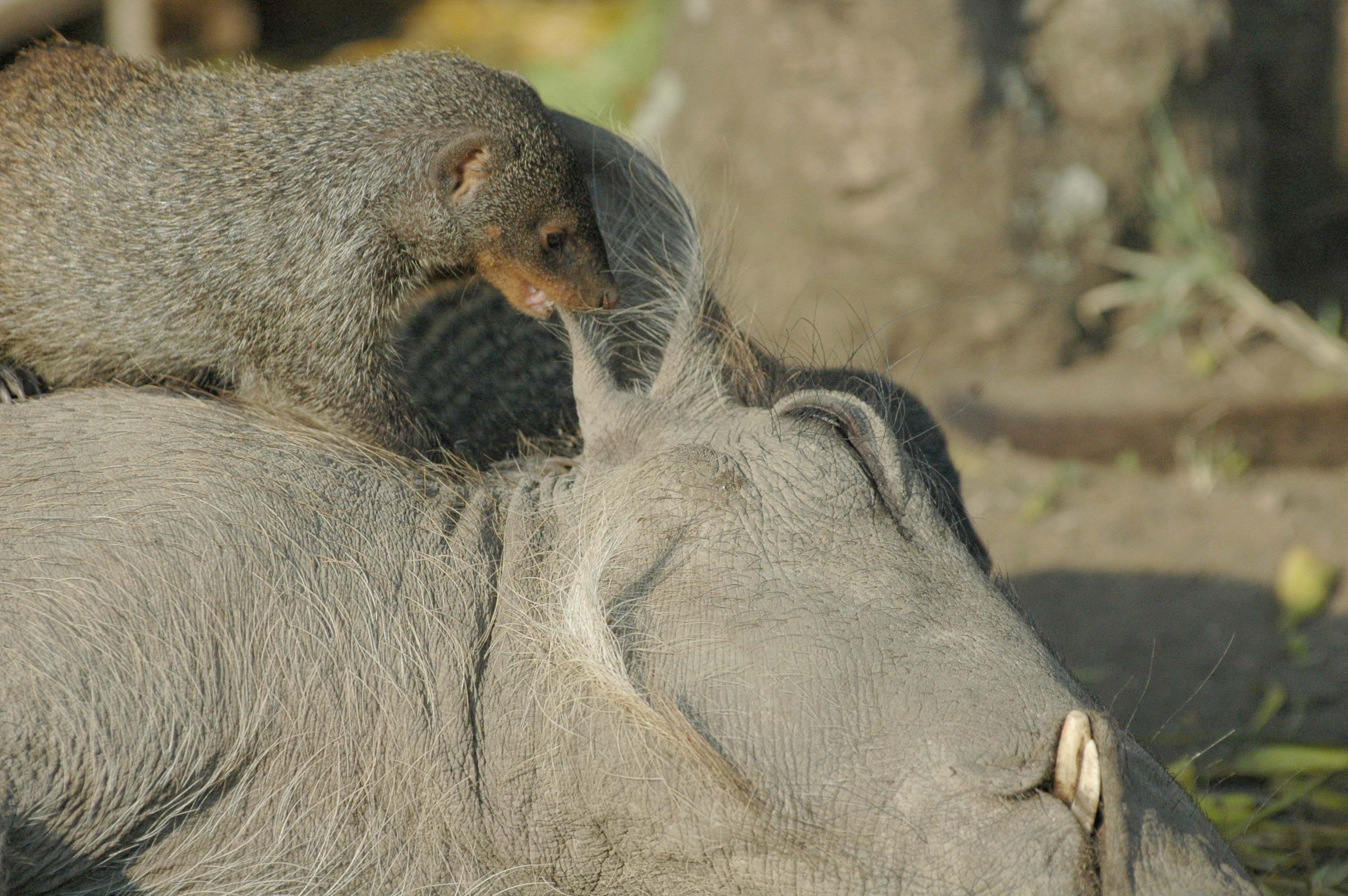Real-Life 'Zootopia': Mongooses and Warthogs Are Unlikely Pals

The animated 2016 movie "Zootopia" takes place in a crowded city packed with a diverse community of anthropomorphized animal species living and working together. The real-life counterparts of these four-legged stars would likely not get along quite as well.
However, even in the real world, different animal species are sometimes discovered to be unexpected "buddies," collaborating in mutually beneficial relationships.
Take warthogs and mongooses. Visitors to Uganda's Queen Elizabeth National Park have observed wild pigs seeking out mongooses and lying down near them, allowing the nimble-fingered groomers to comb through the warthogs' skin and fur for ticks. [Daring Duos: Photos Reveal Unlikely Animal Friends]
Animal allies
Large mammals, like zebras, impalas and rhinos, are often spotted with parasite-eating birds browsing for snacks on the mammals' skin, and many types of monkeys and apes groom each other for stowaway insects and tiny bloodsuckers. But different mammal species lending each other a helping hand is unusual, said Andy Plumptre, author of a recent article on this unusual behavior between mongooses and warthogs. He is also the director for the Albertine Rift Program at the Wildlife Conservation Society (WCS).
"Such partnerships between different mammal species are rare," Plumptre said in a statement. "This particular interaction illustrates a great deal of trust between participants."
Banded mongooses are small, striped carnivores measuring about 1.5 feet (0.5 meters) in length, with males and females living together in communities containing an average of 20 individuals. A statement from the WCS described mongoose "cleaning crews" climbing on top of prone warthogs to search for ticks, in some cases, with multiple mongooses crouching atop the patient pig.
Get the world’s most fascinating discoveries delivered straight to your inbox.
Because the warthogs and mongooses in the park are so acclimated to human tourists, it has been easy for people to get close enough to the animals to observe this behavior, Plumptre explained in the journal article.
"It makes you wonder what else may be happening between species that we don't see," Plumptre added, "because, in order to see it, both species need to be unafraid of people."
Plumptre's description of the tick-searching mongooses and their blissed-out warthog "clients" was published in the January 2016 issue of the newsletter Suiform Soundings.
Follow Mindy Weisberger on Twitter and Google+. Follow us @livescience, Facebook & Google+. Original article on Live Science.

Mindy Weisberger is a science journalist and author of "Rise of the Zombie Bugs: The Surprising Science of Parasitic Mind-Control" (Hopkins Press). She formerly edited for Scholastic and was a channel editor and senior writer for Live Science. She has reported on general science, covering climate change, paleontology, biology and space. Mindy studied film at Columbia University; prior to LS, she produced, wrote and directed media for the American Museum of Natural History in NYC. Her videos about dinosaurs, astrophysics, biodiversity and evolution appear in museums and science centers worldwide, earning awards such as the CINE Golden Eagle and the Communicator Award of Excellence. Her writing has also appeared in Scientific American, The Washington Post, How It Works Magazine and CNN.



